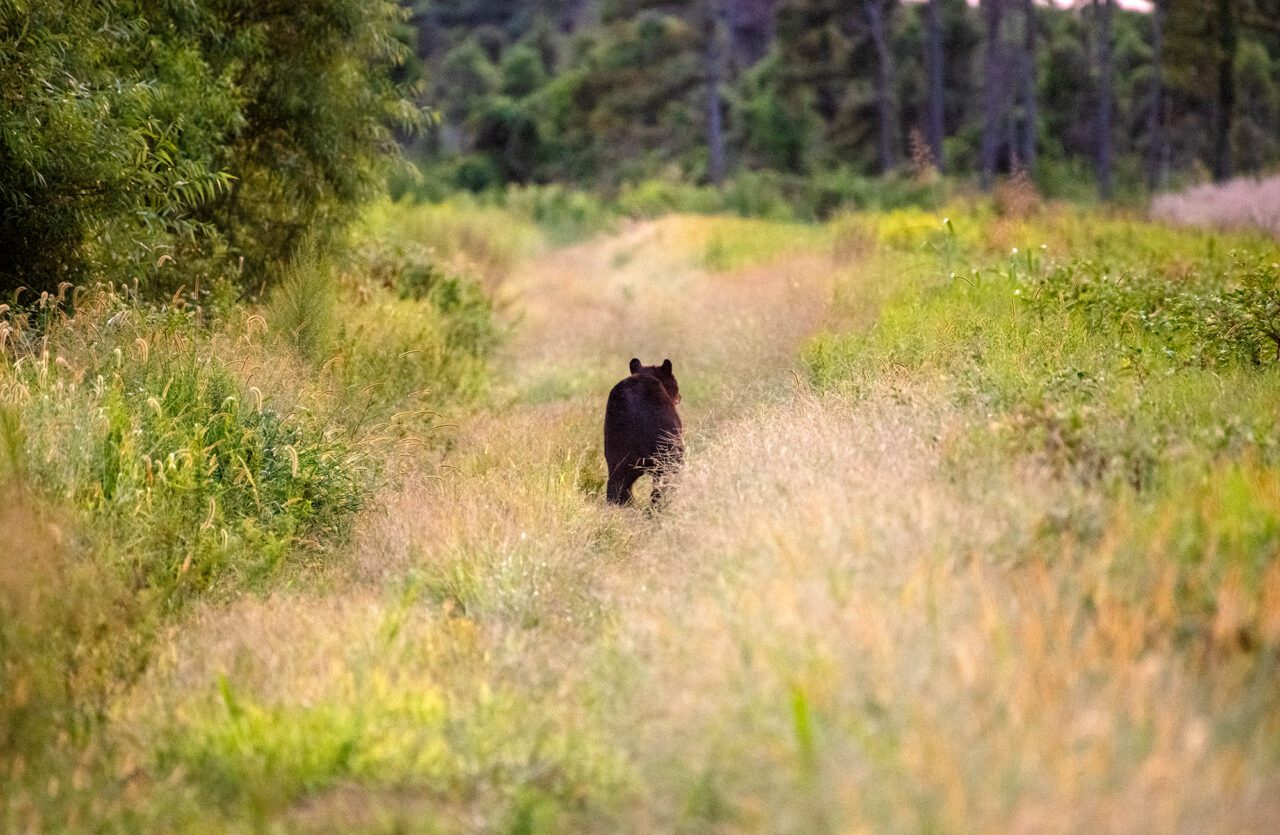
First of two parts.
The American black bear population is healthy on the North Carolina coast, but that hasn’t always been the case.
Supporter Spotlight
The species was in jeopardy in the 1900s for multiple reasons, but particularly habitat loss, and by the mid-1900s, bears could only be found in the most remote coastal swamps and mountains, according to the North Carolina Wildlife Resources Commission, which manages the species.
Since the commission stepped in 50 years ago, the population has been restored to nearly its historic range, Game Mammals and Surveys Supervisor Colleen Olfenbuttel recently explained to Coastal Review.
“The successful recovery of North Carolina’s black bear population was primarily due to conservation and research efforts implemented by the North Carolina Wildlife Resources Commission from the 1970s to present,” she said.
The only kind of bear in the state — and in eastern U.S. — these omnivores are mostly found in the mountains and on the coast. In eastern North Carolina, bears usually prefer uninhabited lowland hardwoods, swamps and pocosins.
Where bears outnumber people
After an early dinner at the Mexican grill in Columbia and chat with the locals about bear sightings, Coastal Review met with Chase Luker, a hunter safety specialist with the commission, at the Pocosin Lakes National Wildlife Refuge visitor center.
Supporter Spotlight
The goal was to cruise around the refuge, which has one of the largest concentrations of black bears found in the United States, according to its website, and some farmland, with permission, with the hope to see bears in their coastal habitat.
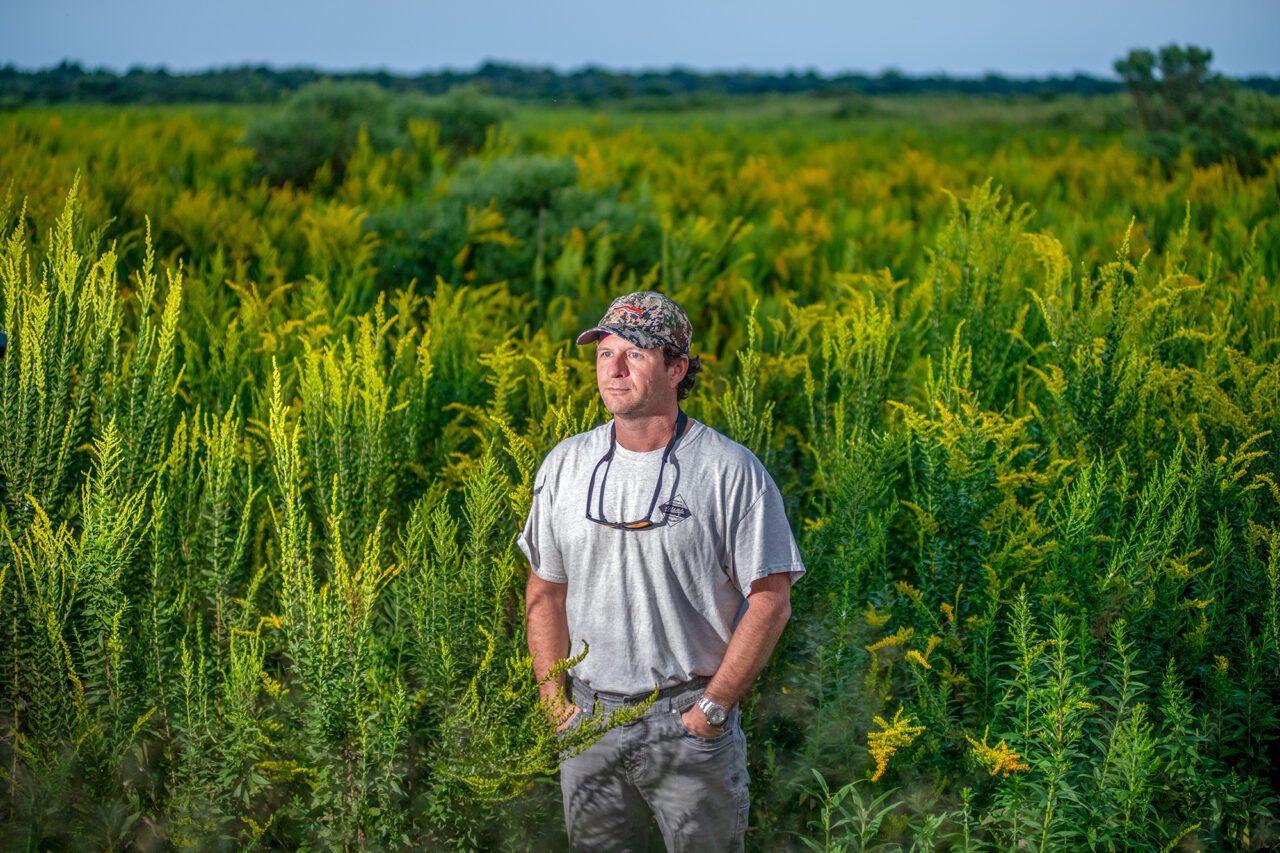
Luker, as he steered his king cab truck out of the parking lot and toward the refuge, said “this is Tyrrell County, where bears outnumber people two to one, but there’s only about 3,500 people in the county,” and it’s the same story for Hyde County. The bears probably outnumber people there two to one, as well.
Dusk is the best time of day to see a bear because, “Bears are smart,” Luker said. They have an aversion to humans because humans “mean trouble,” and “just try to avoid confrontation. But late in the day, you’ll see bears starting to come into these fields. They’ll stay in them as long as they possibly can, and will make their way out around daybreak.”
Luker is originally from Alabama, but has been in eastern North Carolina for decades. He has managed youth programs in the region and is currently specialist for the hunter safety program’s 13-county District 1, which covers the northeastern quarter of the state, from Currituck County south to Carteret County and Greene County being the farthest west. The program provides free firearm safety courses while it emphasizes ethics and responsibility, conservation and wildlife management, wildlife identification, survival and first aid, specialty hunting and tree stand safety, the website states.
Luker cruised down a narrow country road before turning onto a wide gravel lane that seemed to stretch for miles. As dusk crept over the refuge, he expertly maneuvered his truck along the network of bumpy dirt paths, taking turns only a local would know. His familiarity with the area also is in part because he’s led hunting tours on nearby private land for an outdoor experience business.
He stopped every 15 to 20 minutes to check out the different paw prints on the dirt tracks, or slow down with hopes to catch a bear as it pops out of the woods or skitters down a tree.
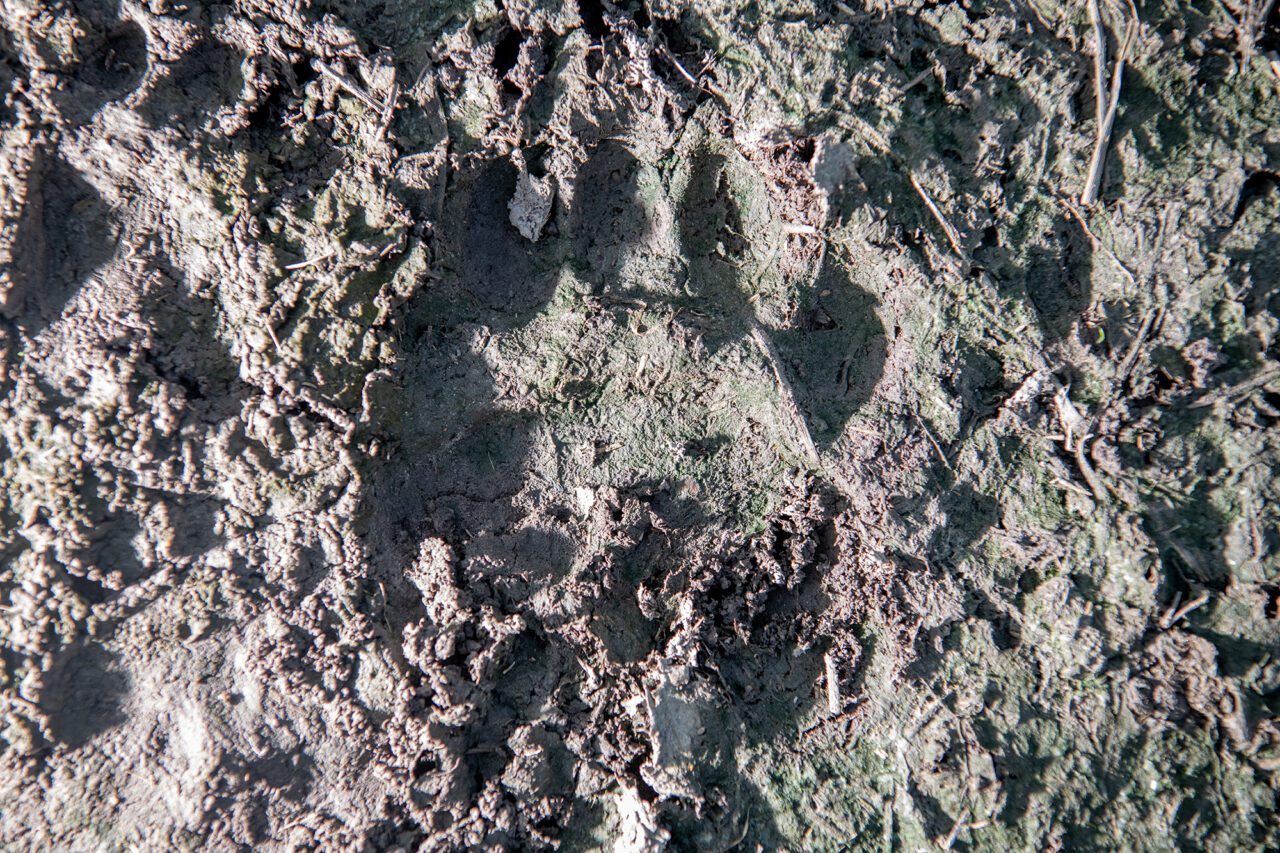
During one of these stops, he nodded toward a stretch of land the size of a few football fields and explained that the breeding season for black bears is in May and June. During that window, bears are everywhere. He added that when people spot a bear limping, it’s usually not because the bear has been run over or been caught in a trap. That bear has most likely been defeated in a fight.
“When they fight, they fight with their front feet, and they bite and chew,” and it takes them a few months to heal, he said.
After breeding, the sows, or female bears, have delayed implantation, which means the egg is fertilized but doesn’t begin to develop until late fall. The bears give birth in January or February, according to the agency.
Species management
The Wildlife Resources Commission manages all aspects of the species, including conservation measures, hunting regulations and seasons, as well as research, which has focused on bear habitat use and home ranges, procedures for estimating bear populations and reducing vehicle collisions.
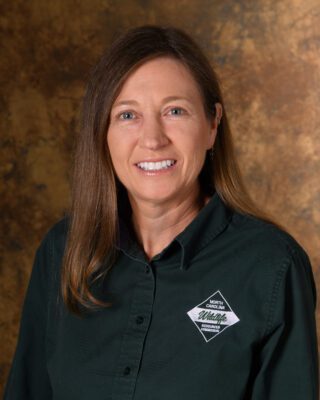
Olfenbuttel helped write the agency’s current bear management plan that outlines how regulated hunting is key to achieving and maintaining black bear population objectives.
The current stated goal for the agency is to “use science-based decision making and biologically-sound management principles to manage black bear populations in balance with available habitats and human expectations to assure long-term existence and hunting opportunities.”
Olfenbuttel has been in the wildlife profession for nearly 30 years. Before taking on her current supervisor role earlier this year, she had been the black bear and furbearer biologist since 2007. She earned her bachelor’s in wildlife biology from Ohio University and master’s in wildlife management from Virginia Tech, and has been in the wildlife profession for nearly 30 years.
The commission has several rules the hunter must follow, which are listed on the commission’s website. Among those is a prohibition on taking sows with cubs or bears weighing less than 75 pounds.
Hunters must have a bear e-stamp, in addition to a hunting license and big game hunting privileges. “Bag limit is one bear, you must report your bear, and you must submit the premolar (tooth) from your harvested bear to the N.C. Wildlife Resources Commission, in addition to other requirements and restrictions,” Olfenbuttel said, adding that there are further restrictions on game lands for hunting bears.
The commission determines rules and dates for hunting season, which is this time of year but exact dates vary by county. The commission allowed hunting for a few weeks earlier this month in Camden, Chowan, Pasquotank, Currituck, Gates, Perquimans, Beaufort, Bertie, Craven, Hertford, Jones, Martin, Washington, Dare, Hyde and Tyrrell counties and will reopen the season Dec. 14-29.
For Bladen, Brunswick, Carteret, Columbus, Cumberland, Duplin, New Hanover, Onslow, Pamlico Pender, Robeson and Sampson counties, season is Nov. 11 to Jan. 1.
“Unlike other causes of bear mortality, such as vehicle collisions or disease, we can regulate levels of hunting mortality,” Olfenbuttel said, adding that regulated hunting is the primary cause of bear mortality, “and that is good, as we can control harvest levels based on our bear population objectives, plus the bear can be utilized by the hunter, hunting is a quick and humane death, unlike disease or starvation, and a bear dying from vehicle collision may also result in a person being injured or killed.”
When the commission began managing the bear population in the 1970s, there was “direct cooperation and help from bear hunters,” Olfenbuttel said.
Hunters help fund conservation and research efforts through hunting license sales and the Pittman-Robertson Act of 1937, which imposes an excise tax on firearms and ammunition, as well as contributed data needed to make science-based management decisions.
Bear hunters also advocated for increased regulations on bear hunting, such as establishing bag limits, season lengths, minimum weight limits and license requirements, to assure the sustainable harvest of the bear population for generations to come.
Most recently, bear hunters joined the commission in calling for the state law that now requires hunters to submit the premolar tooth from their harvested bear, so that agency can use the data to determine its age at harvest and monitor bear population growth trends, Olfenbuttel said.
Luker said that “Hunting is the most reasonable conservation tool. Hunters are citizen-scientists on the ground, they know what’s going on out here. When they harvest a bear, they’re more than happy to send any hair samples, teeth samples, whatever’s needed.”
While bear hunting helps conserve the population, it also helps farmers.
Black bears in eastern North Carolina can cause tremendous agricultural crop damage and financial losses to a farmer, Olfenbuttel said. Regulated hunting allows farmers to offset their financial losses and address crop damage by having licensed hunters pay to access their land and harvest some of these bears.
“The regulated hunting season and the hunting leases that bear hunters are willing to pay landowners and farmers, helps maintain tolerance for bear populations on the agricultural landscape,” she explained.
Visible damage
As Luker guided his truck along the well-worn paths, he pointed out several times during that evening just how much destruction a bear can cause to crops.
“That was corn right there,” he said while pointing out the window to where bears had obliterated several rows of the crop. The closer the land was to the bear sanctuary, the more corn the bears ate.
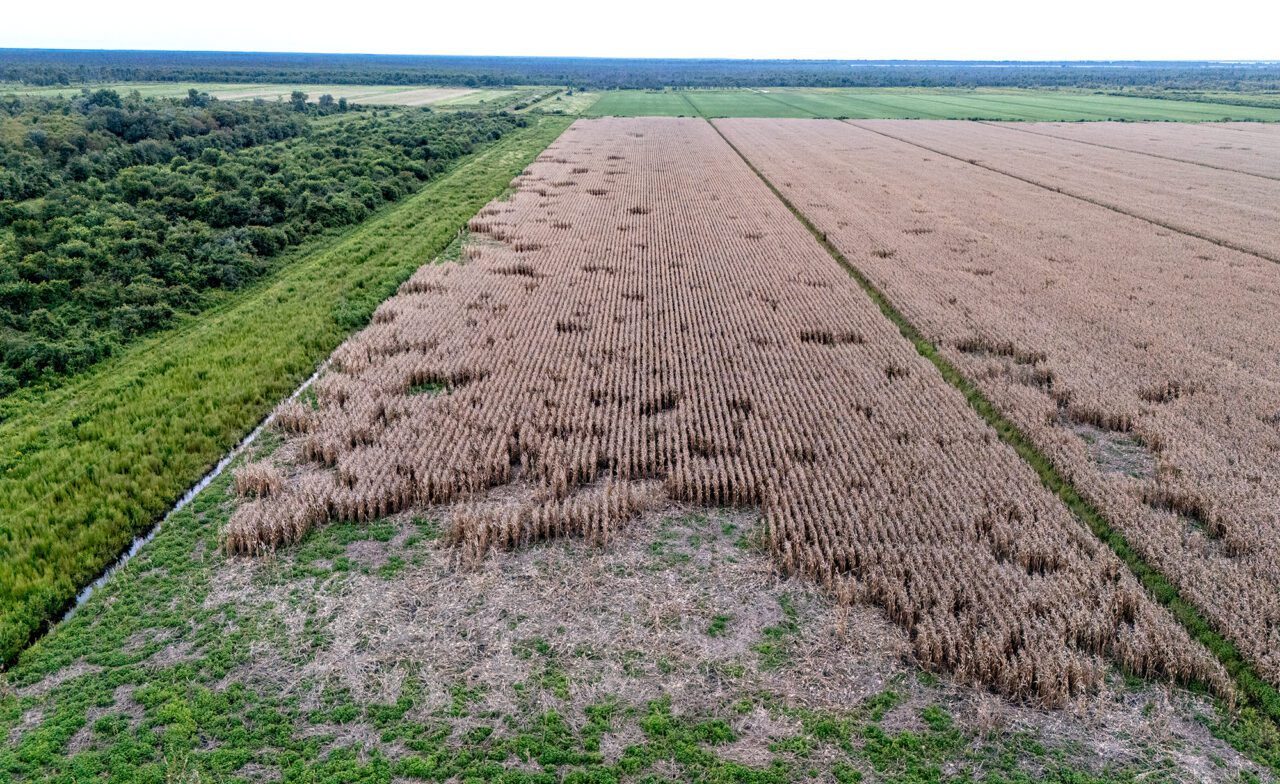
“Bears typically don’t eat beans but they love corn, and as that corn grows, bears will move into the fields and not leave until the corn is picked,” he said. “It’s shaded. There are no bugs in there because of the pesticides and when they eat the corn, they get all the moisture they need, all the water they need.”
It’s a point of contention.
“Farmers can’t stand it, and I can understand why. Sometimes you can expect up to 20% loss.” For example, if a farmer plants 100 acres of corn, and expects to yield 200 bushels an acre at $5 a bushel, a 20% loss is substantial.
“The margins aren’t super high in farming, and bears literally eat into it,” Luker said.
He said many of the regional outfitters have working relationships with landowners who allow guided hunts on their property.
Next in the series: Bear hunting as heritage, conservation
Note: Coastal Review will not publish Thursday and Friday this week in recognition of the Thanksgiving and Native American Heritage Day holidays, respectively.







